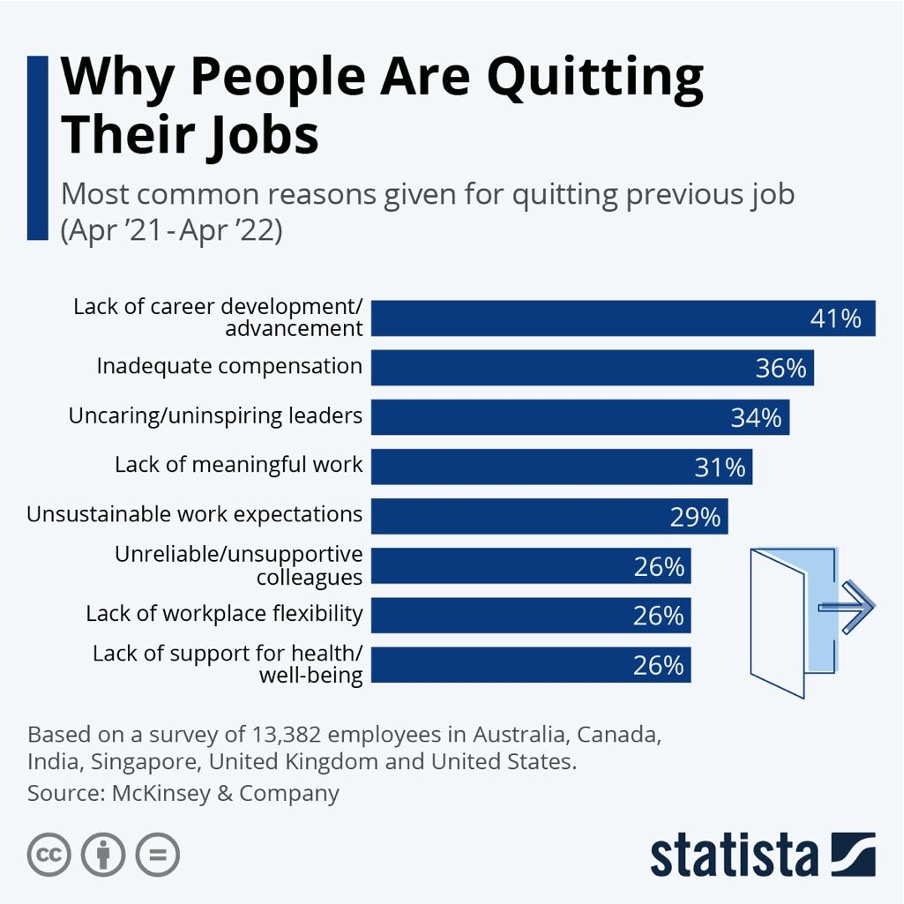Data-Driven Strategies for Reducing High Churn
Ensuring the best minds and hands in the industry are on your payroll is important to staying competitive in modern business. This means recruiting and, more importantly, retaining the best employees. However, relying on traditional employee retention strategies is no longer enough. Businesses must tap into the power of analytics for superior human resources management.
In this article, we will cover how to retain top talent and foster a thriving workplace with our proven tactics.

Understanding employee churn
Employee churn, also known as staff turnover or employee attrition, is the movement of employees out of a company. The employee churn rate refers to the number or percentage of employees who leave a company within a specified period. Employee churn may be voluntary, such as retirements or resignations, or involuntary in the event of layoffs and termination.
Although employee churn is a normal part of business, a churn rate above the industry average should be investigated. For example, a high rate of termination may indicate poor talent acquisition. But even more pressing is the problem of voluntary churn, which often comes at a great cost.
According to Employee Benefit News, when an employee leaves, it will cost 33% of their annual salary to replace them. This comes in the form of recruitment, hiring, and training costs. Beyond the immediately quantifiable costs, high voluntary churn may lead to losing top talents and invaluable experience, decreasing productivity and morale among the remaining staff. Hence, controlling staff flow in and out of the organization is crucial to short and long-term profitability.
Analyzing the root causes of employee churn
Since emerging from the COVID-19 pandemic in 2021, the global workforce has witnessed record turnover numbers, a situation that has been dubbed ‘The Great Attrition.’ With one in three European workers likely to quit their jobs in the next three to six months, this spell of mass attrition is far from over. At the heart of this trend is a global shift in values and expectations of most employees in this post-pandemic era.
Although a desire for better financial compensation still motivates workers to quit, some reasons are now more prominent. The priority for many employees these days is career advancement opportunities. Lack of career development is why 41% of people quit their jobs between 2021 and 2022.

The current workforce is also less tolerant of unhealthy workplace culture. 28% of people who quit a job in the first 90 days attribute their decision to organizational culture. Recognition within the workplace is also important to retention, and employees who feel undervalued are 34% more likely to leave within the next year. Other common reasons for resignations include poor work-life balance, poor relationships with managers, and unreasonable work expectations.
The role of analytics in managing the problem of employee churn
We live in a world where data is king, so it only makes sense that companies shift towards data-driven HR practices. Human resource managers can use advanced analytics tools to break down performance metrics, employee feedback and surveys, recruitment data, and training and development records to generate powerful insights into the state of the workforce.
Consequently, HR staff can understand the factors driving voluntary turnover in their company. Such knowledge can be applied to identifying workers at the highest risk of churning and improving the recruitment process so new hires are retained for longer. Ultimately, analytics can help companies formulate and implement data-driven strategies for improving employee satisfaction and preventing avoidable losses of talented individuals.
Data-driven strategies to prevent high employee churn
Companies can use numerous proactive, data-driven methods to mitigate employee churn. Here are some of the best options:
Improving the onboarding process
A great onboarding experience is a key contributor to employee engagement and retention. In fact, 69% of employees who enjoy the onboarding process will likely stay for at least three years. Therefore, companies should develop personalized onboarding plans using the employee’s demographic data, work background, and preferences.
Furthermore, companies can analyze the productivity of new hires and collect feedback to evaluate their onboarding process and adjust as necessary. By regularly improving this process, new employees may focus less on exploring opportunities elsewhere.
Collecting and analyzing feedback
Employees uncomfortable with giving upward feedback are 16% less likely to stay. This highlights the importance of providing a healthy work environment where employees can speak. Employee feedback is a treasure trove of information on how your workforce truly feels about the company.
Employee engagement surveys, stay interviews, pulse surveys, and even exit interviews are opportunities for collecting employee feedback. Consider allowing anonymity and using open-ended questions to encourage honest feedback. Analyze collected data for trends and patterns and use the insights to improve the employee experience.
Designing personalized retention plans
Companies must recognize that each employee is a unique individual with their own aspirations and motivations. Designing personalized retention plans is a great way to meet the specific needs of every employee and ensure that the best talents are retained.
For example, after identifying an employee who prioritizes career advancement, HR can offer such an individual additional training opportunities such as online courses and workshops. This enables them to gain the skills needed to move up the ladder. Salesforce’s Trailhead is an excellent example of a platform for individuals to acquire new skills.
Similarly, an employee who craves a better work-life balance can be offered the option of working remotely once or twice a week. Performance metrics can measure how a retention plan affects productivity, engagement, and satisfaction to ensure mutual benefits for the employees and the company.
Implementing predictive analytics
The power of predictive analytics can be applied to workforce management. By analyzing historical and current data, companies can now accurately predict employees at the greatest risk of leaving in the future. Relevant data sources for this endeavour include HR records, employee feedback, performance reviews, and job satisfaction scores.
Subsequently, patterns that correlate with employee turnover can be identified by predictive models, which are trained over time to improve accuracy. This will allow companies to take proactive measures to appease top employees before they hand in their resignations.
Examples of successful implementation of data-driven strategies
Several companies are employing data analytics to the task of reducing staff turnover. IBM's predictive attrition program is a great example. Their HR team has successfully built a predictive analytics model that predicts employees at risk of churning with a reported accuracy of 95%. This allows IBM HR to take proactive steps in preventing turnover, reducing its cost of turnover by about $300 million annually.
Google is another successful case study on preventing churn with data. Google has redefined HR using its 'people analytics' program to forecast employee departures accurately. Their famous 'Googlegeist survey' also collects honest employee feedback. Their HR team can develop retention plans to improve employee engagement and satisfaction.
Harnessing data for enhanced employee retention and stability
Considering the powerful technology at our disposal, it is unacceptable for your company to continue to endure avoidable turnover. Organizations must switch to data-driven HR management to protect against the expensive consequences of high employee churn. Also, it is important to combine these data-driven strategies with practices such as effective management and positive work culture for optimal results.
ACTUM Digital can help set up the data analytics processes your HR team needs to power data-driven recruitment, talent development, and retention initiatives. Contact us today to begin the much-needed process of transforming your HR department into a high-performing unit that attracts and keeps the best employees.